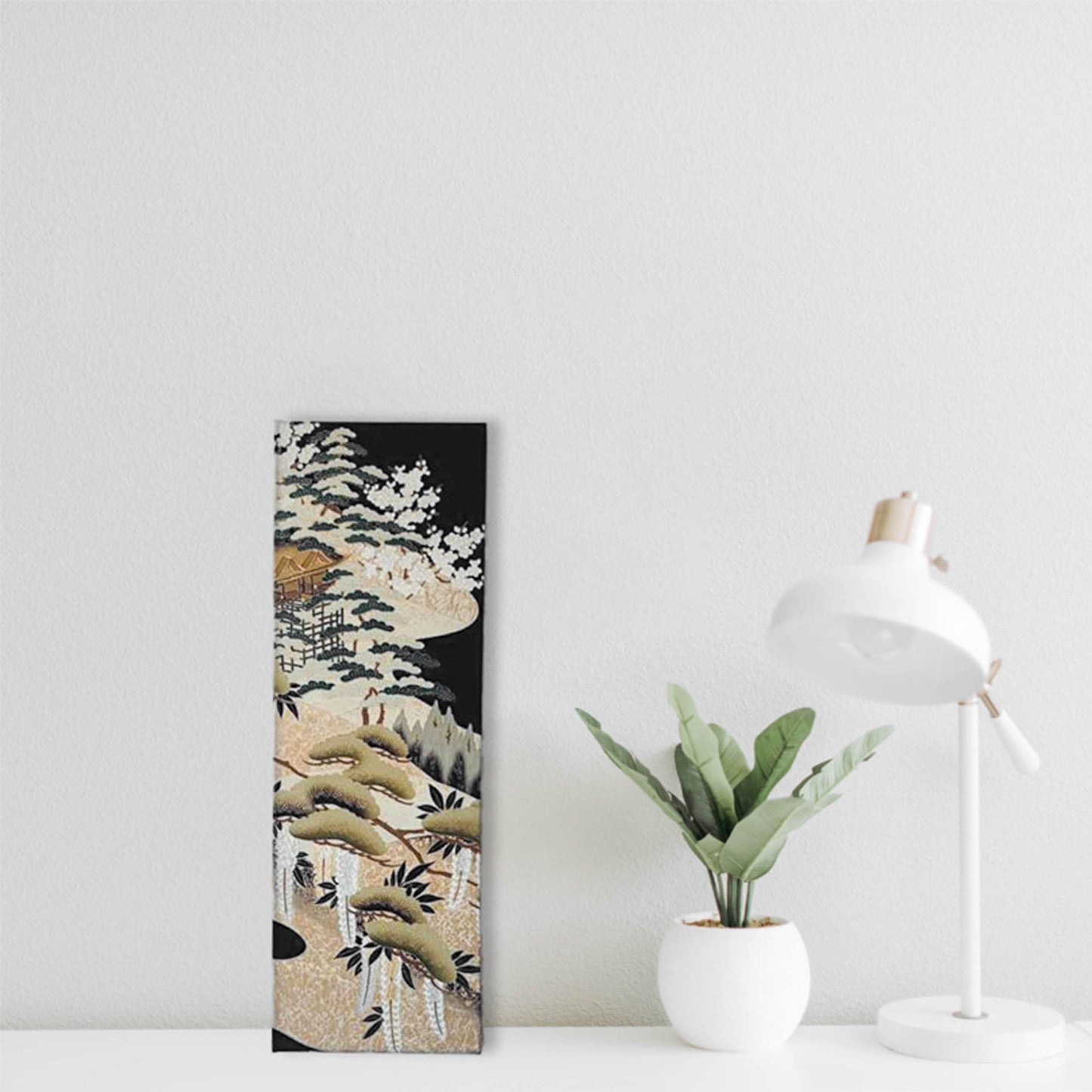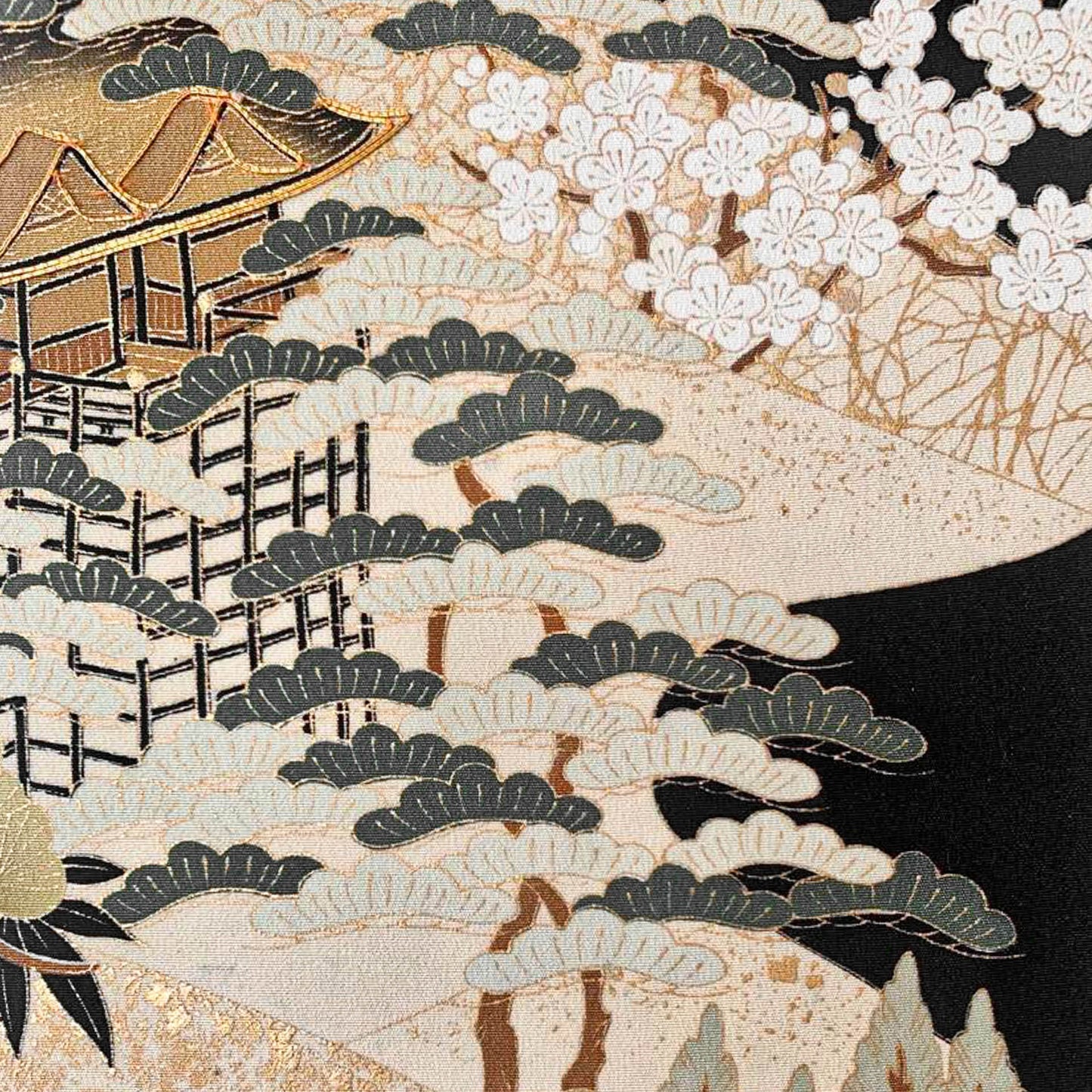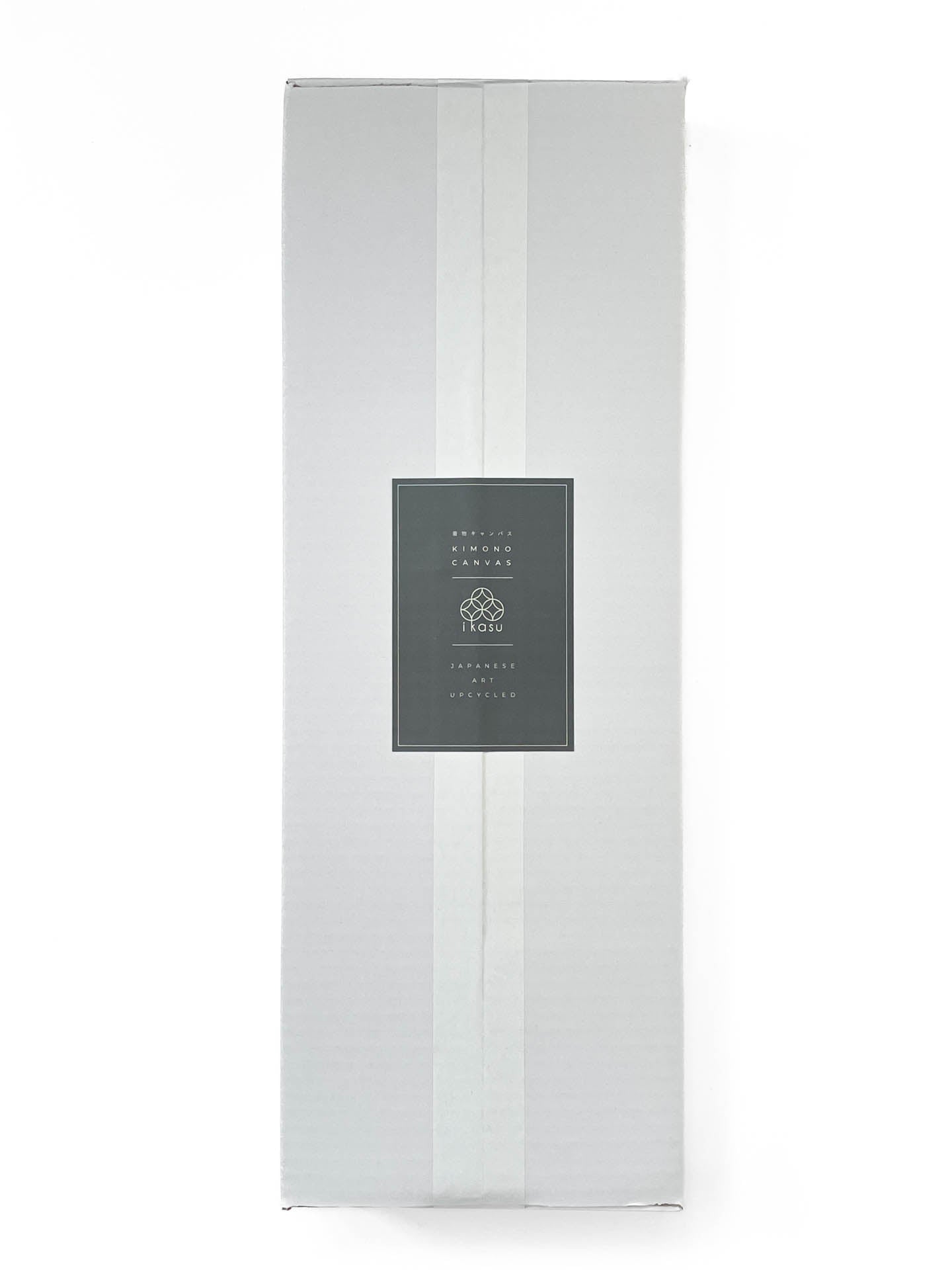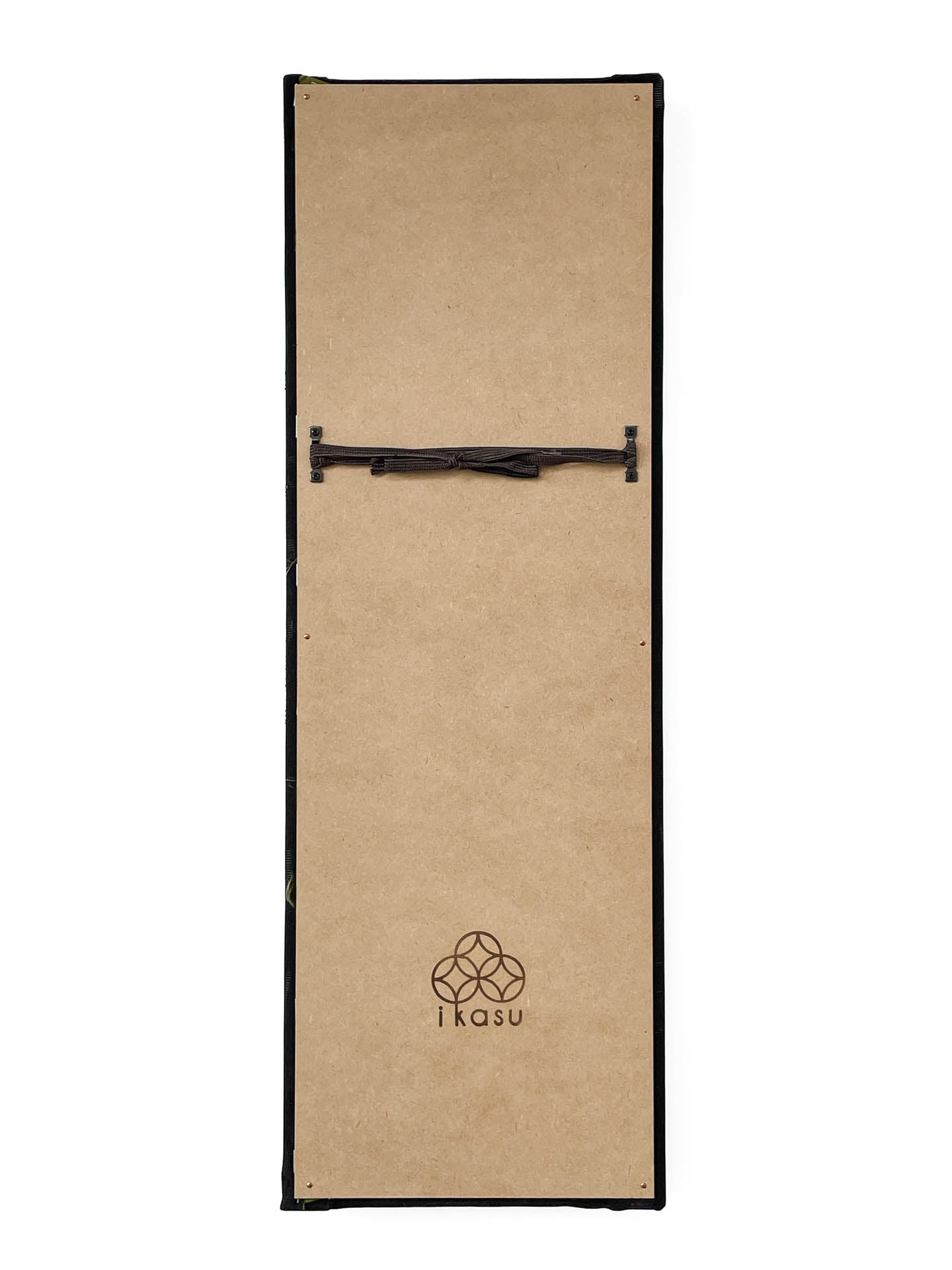Memories of Kyoto
Memories of Kyoto
No se pudo cargar la disponibilidad de retiro
Size
about 20cm x about 60cm x about 4cm
Materials
wooden frame, cotton linen canvas (under-layer), pure silk (outside-layer)
About this canvas
This kimono canvas beautifully depicts the iconic Kiyomizu Temple, a real temple in Kyoto that was built in the 8th century.
Period/Story
This canvas has been repurposed from a Kuro-tome-sode kimono, which dates back to the late Showa period, around the 1970s.
Explanation and meaning of pattern and colors
The pattern on this canvas beautifully portrays a scene from Kiyomizu Temple, a UNESCO World Heritage Temple in Kyoto, known for its iconic "Kiyomizu-no-butai" (清水の舞台, "stage of Kiyomizu"). The Kiyomizu-no-butai, an elevated observatory platform depicted in the upper left corner, is surrounded by pine trees, plum blossoms, and wisteria flowers, which infuse a festive atmosphere into the design.
One of the prominent patterns featured here is the "Kasamatsu" (笠松), a representative pine tree pattern. The name "kasamatsu" is derived from the horizontal spread of the pine tree's leaves and branches, resembling a traditional hat ("kasa" means "hat" in Japanese).
In East Asian culture, the pine tree symbolizes longevity due to its evergreen nature, especially its lush green leaves that endure even in winter. In Japan, it's referred to as the "everlasting tree" because of its year-round greenery and has been considered a symbol of good fortune since ancient times. It is a key element in the trio known as "Sho, chiku, bai" (meaning "pine, bamboo, and plum" in Japanese), where these trees symbolize strength. The plum tree, known for flowering even in winter, and the bamboo, which retains its greenness throughout the seasons, often accompany the pine. The kadomatsu, a pine tree decoration placed at the entrance of homes during New Year's, is believed to symbolize the welcoming of the gods.
Description of fabric characteristics
The Kuro-tome-sode kimono, from which this canvas is crafted, represents the most prestigious formal attire for married women in the world of kimonos. It is characterized by a black kimono with a base color of black adorned with five crests. The fabric is typically made of crepe without a ground pattern, with the pattern being primarily located on the lower part of the kimono.
Various techniques are employed for dyeing kimonos in black, but the most common method, especially for Kuro-tome-sode, is known as Kuro-hiki-zome dyeing (黒引染). This technique often involves under-dyeing with crimson or indigo before applying the black dye, resulting in a deeper and shinier black shade. Additionally, some traditional craftsmen communities employ a technique using vegetable dye pigments to achieve a matte black finish, although this is now relatively rare.
The gold embroidery showcased in this artwork, found on the Kiyomizu-dera Temple's roof, the gold accents on the Kasamatsu pine trees, the beaten gold used on the wisteria, and other parts of the pattern, gives it a luxurous touch.
Kin-koma embroidery is a specialized technique where thick or gold threads, which cannot be threaded through a needle conventionally, are wound around a wooden piece (a type of thread winder). This wound thread is then carefully laid along the underpainting and secured with a binding thread. The use of gold threads adds a three-dimensional quality to the artwork, while the delicate nuances of the pattern contribute to its glamorous appearance.
Decoration Advice
The canvas can be displayed on a table, wall, etc. You will need tacks or nails to hang it on the wall. Because it is light, you can hang it with two ordinary thumbtacks. You can also lean it against an easel. Perfect for redecorating your room, as a housewarming gift, as a present, or as a souvenir for your loved ones! The product will be carefully wrapped and sent, so it can be used as a gift on the go.
Precaution
All the works are made from real kimonos, antiques and vintages. For this reason, the fabric may have traces of long-term use and minor fabric damages. - In case there are any scratches or stains, we always add a photo of the area on the item page, so please check before purchasing. Regarding precaution, cancellation and refund policy, please refer to the refund policy in the footer section of the site for information.
The last pictures in the gallery are the pictures of the reverse side of the canvas, the attachments and the package.




















